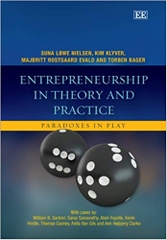-
-
-
Tổng tiền thanh toán:
-
-
Thông tin
-
Tìm sách theo yêu cầu
In the bestselling tradition of The Soul of a New Machine, Dealers of Lightning is a fascinating journey of intellectual creation. In the 1970s and '80s, Xerox Corporation brought together a brain-trust of engineering geniuses, a group of computer eccentrics dubbed PARC. This brilliant group created several monumental innovations that triggered a technological revolution, including the first personal computer, the laser printer, and the graphical interface (one of the main precursors of the Internet), only to see these breakthroughs rejected by the corporation. Yet, instead of giving up, these determined inventors turned their ideas into empires that radically altered contemporary life and changed the world.
Based on extensive interviews with the scientists, engineers, administrators, and executives who lived the story, this riveting chronicle details PARC's humble beginnings through its triumph as a hothouse for ideas, and shows why Xerox was never able to grasp, and ultimately exploit, the cutting-edge innovations PARC delivered. Dealers of Lightning offers an unprecedented look at the ideas, the inventions, and the individuals that propelled Xerox PARC to the frontier of technohistoiy--and the corporate machinations that almost prevented it from achieving greatness.
Product Details
- Paperback: 480 pages
- Publisher: HarperBusiness (April 5, 2000)
- Language: English
- ISBN-10: 0887309895
- ISBN-13: 978-0887309892
- Product Dimensions: 8 x 5.4 x 1.2 inches
- Shipping Weight: 13.6 ounces (View shipping rates and policies)
- Average Customer Review: 4.1 out of 5 stars See all reviews (61 customer reviews)
- Amazon Best Sellers Rank: #298,438 in Books (See Top 100 in Books)
Editorial Reviews
Amazon.com Review
Throughout the '70s and '80s, Xerox Corporation provided unlimited funding to a renegade think tank called the Palo Alto Research Center (PARC). Occupying a ramshackle building adjacent to Stanford University, PARC's occupants would prove to be the greatest gathering of computer talent ever assembled: it conceptualized the very notion of the desktop computer, long before IBM launched its PC, and it laid the foundation for Microsoft Windows with a prototype graphical user interface of icons and layered screens. Even the technology that makes it possible for these words to appear on the screen can trace its roots to Xerox's eccentric band of innovators. But despite PARC's many industry-altering breakthroughs, Xerox failed ever to grasp the financial potential of such achievements. And while Xerox's inability to capitalize upon some of the world's most important technological advancements makes for an interesting enough story, Los Angeles Times correspondent Michael Hiltzik focuses instead on the inventions and the inventors themselves. We meet fiery ringleader Bob Taylor, a preacher's son from Texas known as much for his ego as for his uncanny leadership; we trace the term "personal computer" back to Alan Kay, a visionary who dreamed of a machine small enough to tuck under the arm; and we learn how PARC's farsighted principles led to collaborative brilliance. Hiltzik's consummate account of this burgeoning era won't improve Xerox's stake in the computer industry by much, but it should at least give credit where credit is due. Recommended. --Rob McDonald --This text refers to an out of print or unavailable edition of this title.
From Publishers Weekly
Anyone who uses a personal computer is familiar with technologies pioneered by Xerox's Palo Alto Research Center (PARC), which started operation in 1970. The received wisdom is that Xerox muffed the chance to dominate the personal computer era by allowing revolutionary technologies developed at PARC to be snatched up by strangers and rivals (most famously, Apple, which took the mouse and the graphical user interface from PARC). L.A. Times reporter Hiltzik argues that the received wisdom is wrong. He expertly situates the story of which products actually made it to market for Xerox (e.g., the laser printer) and which technologies Xerox leaked away (WYSIWYG word processing, hypertext, Ethernet and TCP/IP, to name a few) in a broader analysis of the role of basic science research in business. He praises Xerox execs for understanding the difference between basic research and product development and for exempting PARC from the stultifying effect of having to do the latter. Among the many facts of life on the cutting edge that Hiltzik makes abundantly clear is that very bad decisions are often made for very good business reasons. While granting that Xerox could certainly have better exploited the new technologies issuing from PARC, he emphasizes that the company brought together "a group of superlatively creative minds at the very moment when they could exert maximal influence on a burgeoning technology, and financed their work with unexampled generosity." This is a top-notch business page-turner. Unburdened by any gee-whiz jaw-dropping, yet fully appreciative of the power of creative minds, it is informed by a sure understanding of the complex relationship between business and technology. Major ad/promo.
Copyright 1999 Reed Business Information, Inc. --This text refers to an out of print or unavailable edition of this title.
- Link: http://www.amazon.com/Dealers-Lightning-Xerox-PARC-Computer/dp/0887309895
Copyright 1999 Reed Business Information, Inc. --This text refers to an out of print or unavailable edition of this title.
XEM THÊM TẠI AMAZON.COM
- Thông tin chi tiết
- Mục lục
- Đọc thử
- Đọc thử
- Đánh giá & bình luận của người mua
- Những cuốn sách cùng chủ đề hoặc có liên quan
Tại web chỉ có một phần nhỏ các đầu sách đang có nên nếu cần tìm sách gì các bạn có thể liên hệ trực tiếp với Thư viện qua Mail, Zalo, Fanpage nhé
Đăng ký nhận tin qua email
Hãy đăng ký ngay hôm nay để nhận được những tin tức cập nhật mới nhất về sản phẩm và các chương trình giảm giá, khuyến mại của chúng tôi.












